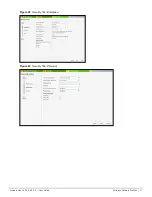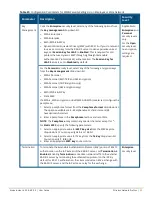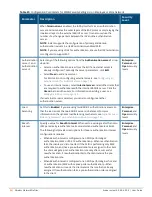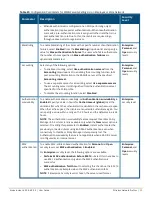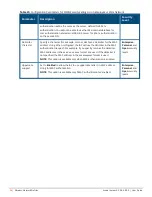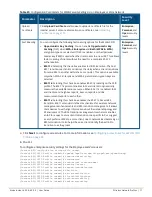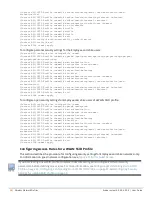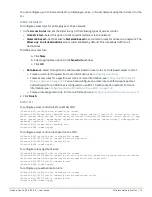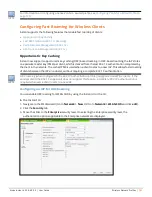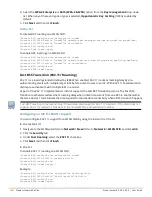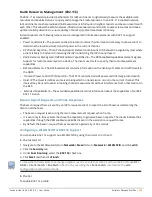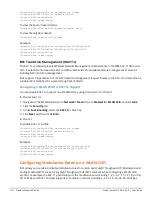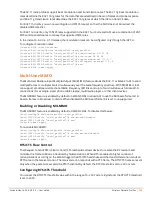
90
| Wireless Network Profiles
Aruba Instant 6.5.0.0-4.3.0.0 | User Guide
Enforcing DHCP
Starting from Instant 6.4.3.4-4.2.1.0, you can configure a WLAN SSID profile to enforce DHCP on IAP clients.
When DHCP is enforced:
l
A layer-2 user entry is created when a client associates with an IAP.
l
The client DHCP state and IP address are tracked.
l
When the client obtains an IP address from DHCP, the DHCP state changes to complete.
l
If the DHCP state is complete, a layer-3 user entry is created.
l
When a client roams between the IAPs, the DHCP state and the client IP address will be synchronized with
the new IAP.
By default, enforcing DHCP feature is disabled.
To enforce DHCP:
(Instant AP)(config)# wlan ssid-profile <name>
(Instant AP)(SSID Profile <name>)# enforce-dhcp
(Instant AP)(SSID Profile <name>)# end
(Instant AP)# commit apply
Configuring Security Settings for a WLAN SSID Profile
This section describes the procedure for configuring security settings for an Employee or Voice network. For
information on guest network configuration, see
Captive Portal for Guest Access
.
If you are creating a new SSID profile, configure the WLAN and VLAN settings before defining security
settings. For more information, see
Configuring WLAN Settings for an SSID Profile on page 82
and
Configuring VLAN Settings for a WLAN SSID Profile on page 87
Configuring Security Settings for an Employee or Voice Network
You can configure security settings for an Employee or Voice network by using the Instant UI or the CLI.
In the Instant UI
To configure security settings for an Employee or Voice network:
1. On the
Security
tab, specify any of the following types of security levels by moving the slider to a desired
level:
l
Enterprise
—On selecting the enterprise security level, the authentication options applicable to the
enterprise network are displayed.
l
Personal
—On selecting the personal security level, the authentication options applicable to the
personalized network are displayed.
l
Open
—On selecting the open security level, the authentication options applicable to an open network
are displayed.
The default security setting for a network profile is
Personal
.
The following figures show the configuration options for
Enterprise
,
Personal
, and
Open
security
settings:
















